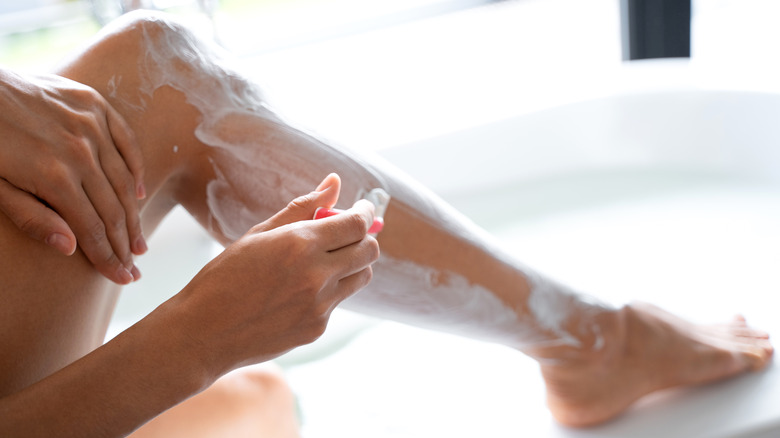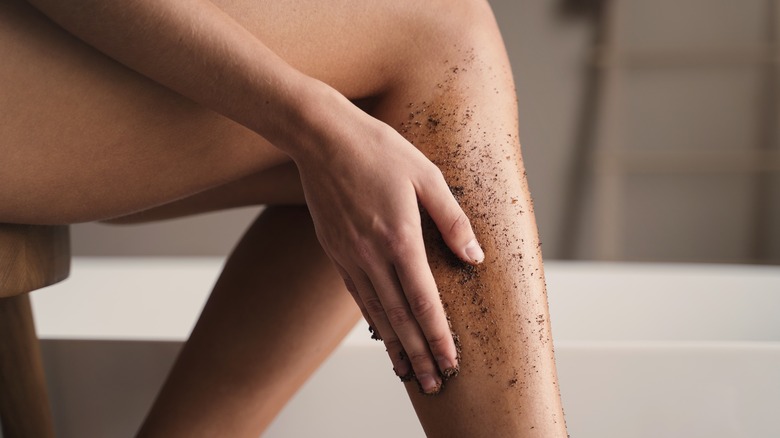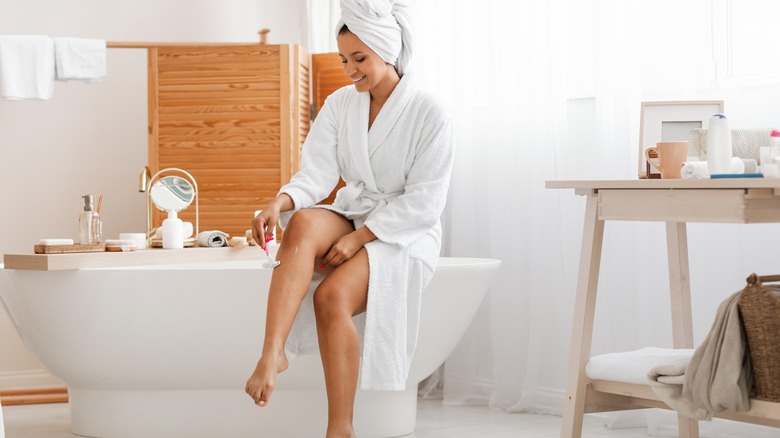Exfoliation Is Key For Getting The Closest Shave (Without The Irritation)
Let's face it shaving is a chore that people very rarely enjoy doing. Especially when you forget shaving can be a nuisance that never seems enjoyable. Add to this the fact that shaving can become dangerous and even painful, and it's easy to see why people dislike spending a lot of time shaving. When done improperly, it can lead to various problems that range from mild irritation to serious injuries. One of the most common issues people face while shaving is razor burn, which causes redness, itching, and bumps on the skin. Shaving can also result in nicks and cuts, which can be painful and cause bleeding. Ingrown hairs are another common issue that occurs when hairs grow back into the skin instead of outwards. These can be uncomfortable and unsightly and may cause infection if left untreated. With so many things that can go wrong, you've likely been shaving incorrectly.
Shaving is much more than swiping a razor up and down your skin. It's vital to take proper precautions while shaving, such as using a sharp blade, applying shaving cream or gel, and shaving in the direction of hair growth to avoid getting small or significant injuries. If you struggle to get a close enough shave, your problem might be with exfoliation. Whether or not you exfoliate your skin might be the difference between getting a good shave with no injuries.
Why you need to exfoliate before shaving
If you hate getting out of the shower to patches of stubble after shaving, the culprit might be your lack of exfoliation. The process of exfoliation involves removing dead skin cells from the surface of the skin, which can accumulate and clog the razor blade, leading to a less effective shave. Cleveland Clinic explains that by removing this layer of dead skin cells, exfoliation allows the razor blade to glide more easily over the skin, resulting in a closer shave. Additionally, exfoliation helps to prevent ingrown hairs by clearing away the buildup of dead skin cells that can trap hairs beneath the skin's surface. Whenever you exfoliate, ensure you are exfoliating in circular motions instead of harshly scrubbing your skin. You don't want to over-exfoliate as this will only produce skin cuts and pain.
Exfoliation also has several skincare benefits. It can help to unclog pores, reduce the appearance of fine lines and wrinkles, and improve overall skin texture and tone. By removing dead skin cells and other impurities, exfoliation allows for better absorption of skincare products, such as moisturizers and serums, which can help to keep the skin looking and feeling healthy and radiant. Therefore, by incorporating regular exfoliation into your shaving routine, you can not only achieve a closer shave but also promote overall skin health and appearance.
What to include in your shaving routine
Besides exfoliating, there are other steps you need to take to get the best possible shave. As simple and obvious as it may sound, the first step should always be getting your skin wet. While many prefer dry shaving, wetting your skin helps to soften the hair and open the pores, making it easier for the razor blade to glide smoothly over the skin. After exfoliating, apply a shaving cream or gel to the skin to help lubricate the razor blade and protect the skin from irritation. A good shaving cream or gel should be formulated with skin-soothing ingredients, such as aloe vera or chamomile, to help reduce redness and inflammation. Once you've applied the shaving cream or gel, it is time to shave.
While shaving, it's essential to use a sharp razor blade and to shave in the direction of hair growth to prevent ingrown hairs and irritation. A multi-blade razor can provide a closer shave, but it may also increase the risk of irritation, so ensure to find a balance that works for your skin. After shaving, rinse with cool water to help soothe any irritation and to close the pores. Pat the skin dry with a clean towel and apply a moisturizer to help hydrate and nourish the skin. Look for a moisturizer that is lightweight and non-greasy, such as a lotion or gel, to avoid clogging the pores. Rinse and replace your razor regularly to prevent infections and irritations.


